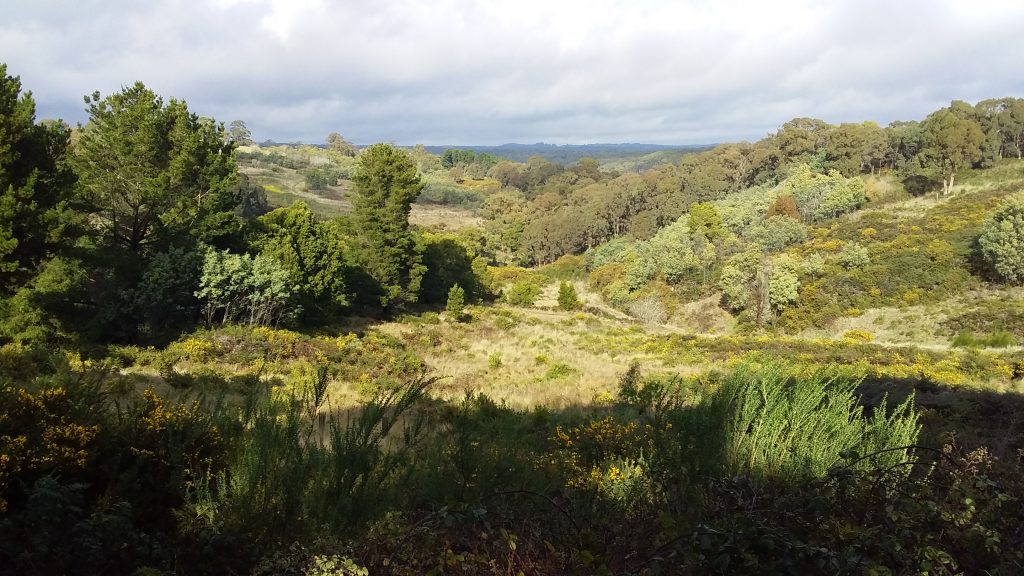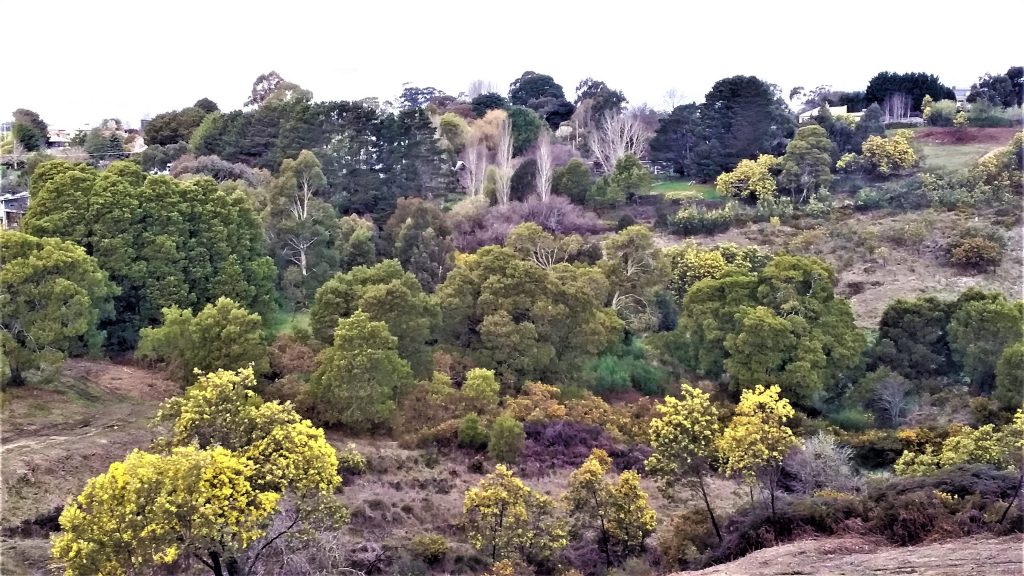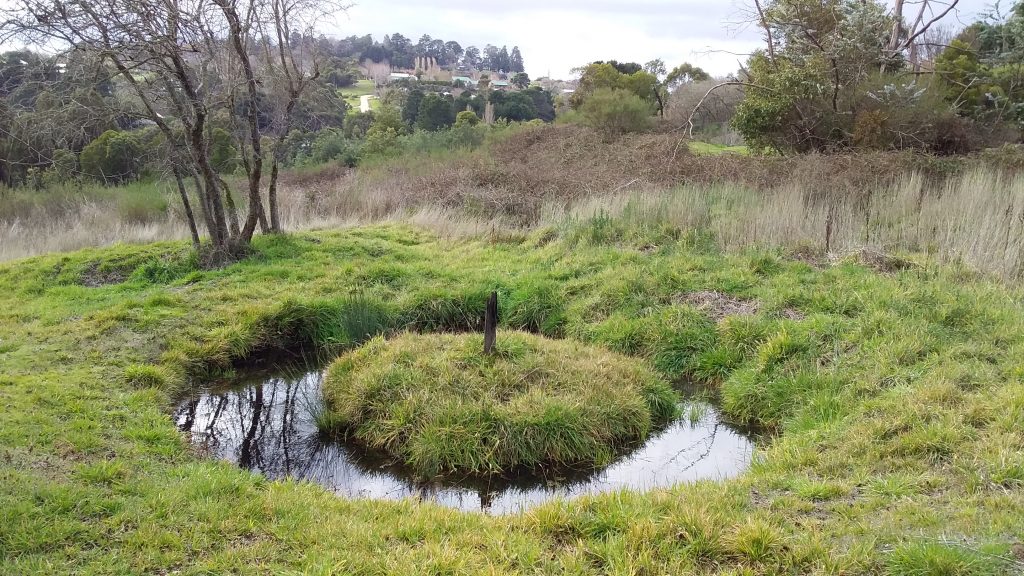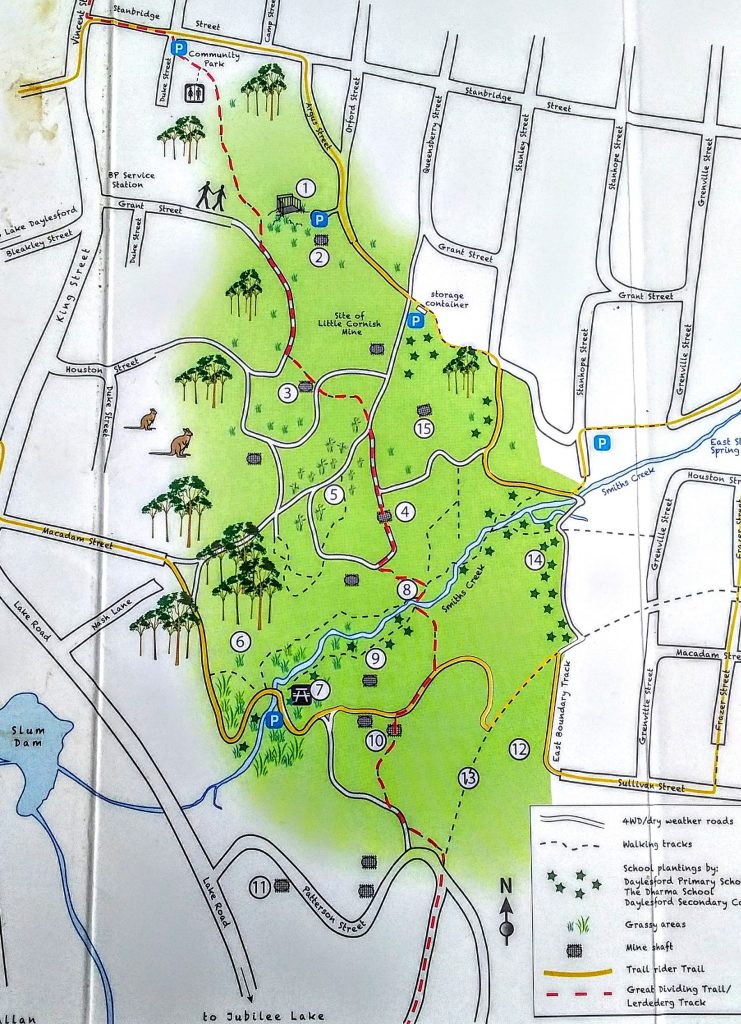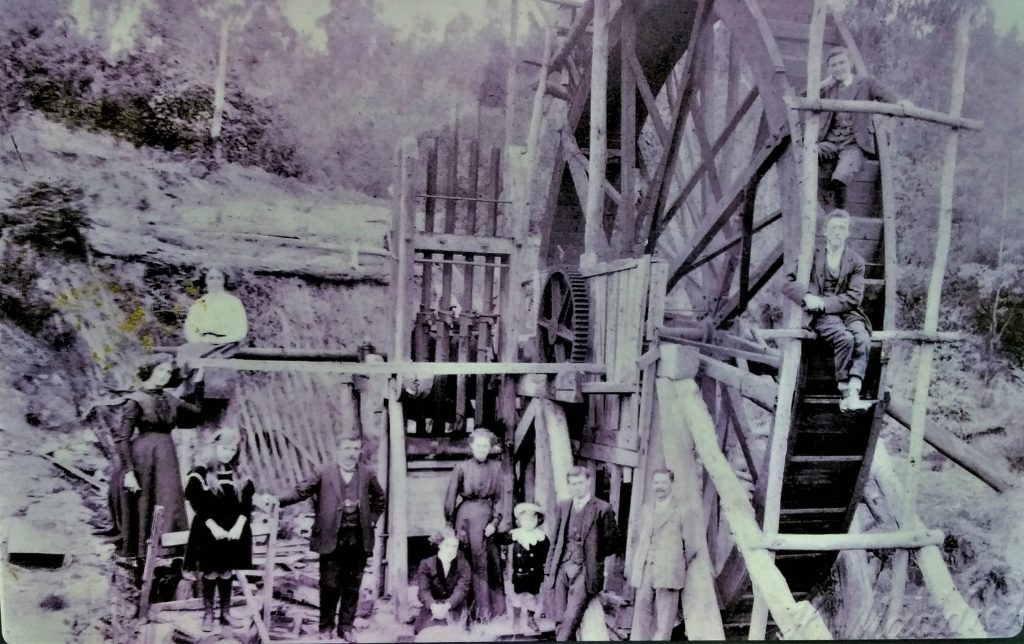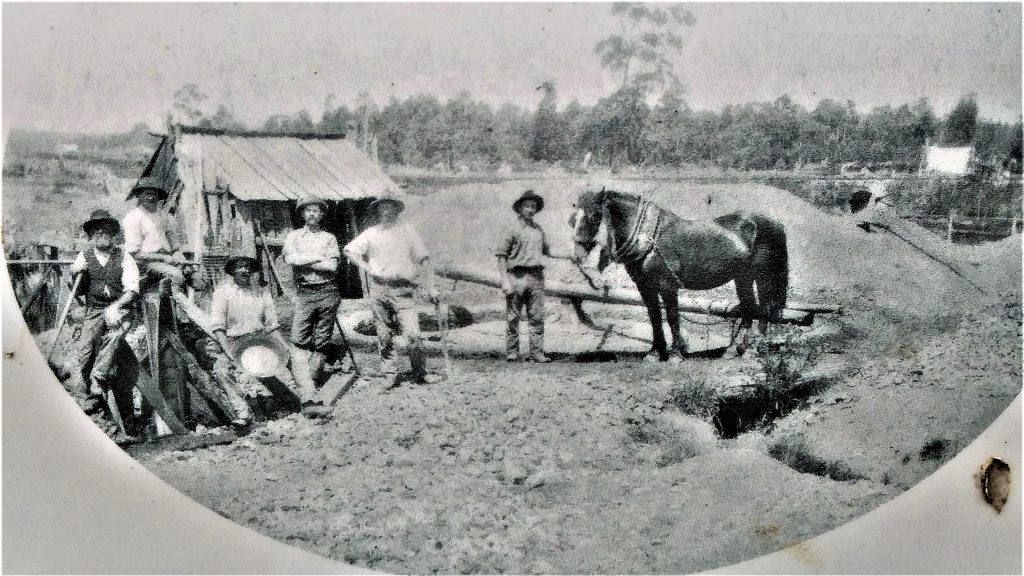THIS TWO HOUR WALK explores the stunning Cornish Hill Reserve located in the town of Daylesford. The Cornish Hill river valley, traversed by Smiths Creek, is rich in former mining sites including tunnels, mullock heaps, puddling circle, sluices, water races and mine workings. Explore the gold rush history of this spectacularly successful goldfield from the 1850s onwards that has yielded 8-10 tons of gold.
Daylesford, ninety minutes north-west of Melbourne, is a popular mountain retreat since the 1880s, famous for its Victorian architecture, lakes, forests, historic guesthouses, mineral springs, fine rural cuisine and Swiss Italian heritage.
CORNISH HILL RESERVE is rich in fauna and flora. Our tour includes the extraordinary restoration of the Indigenous lands of the Dja Dja Wurrung traditional owners from a landscape once ravaged by mining.
WE START from Thomas Lookout with spectacular views over the town, lake, forest and mountains. We pass mines such as Bonnard’s, Old Cornish, Argus and Mitchell before descending to the delightful Smiths Creek. Walking along the old water race, we come to the former water wheel site and ascend to the South Cornish Mine site. On route, we pass bushland restoration sites and learn about the rich bird and animal life and traditional Indigenous foods and tools. Travelling west, we visit the puddling circle of Swiss-Italian pioneer Giuseppe Scascighini before following a scenic ridge back to our starting point.
Contact: melbwalks@gmail.com I
THE CORNISH HILL TRAIL
The 38-hectare Cornish Hill Reserve is on the traditional lands or Djandak of the Dja Dja Wurrung traditional owners. Cornish Hill was once a forested landscape rich in birds, insects, and other wildlife. The discovery of gold in 1851 transformed the landscape, with dozens of mines covering the area. The reserve was named for the Cornish miners whose deep mining skills were incredibly effective in extracting gold from quartz reefs running beneath the hill. The earliest miners sought alluvial gold near Wombat Flat (now Daylesford Lake), then turned to buried stream beds and eventually the deep reefs beneath the basalt running south from from the Wombat Hill volcano. Water from spring-fed Smith’s Creek, which flows through the reserve into Wombat Creek and Daylesford Lake, supported these operations. The mining left the hill stripped of vegetation, later overrun by goats and invasive weeds such as gorse, blackberry, and broom.
FRIENDS OF CORNISH HILL
In 1994, a government plan to sell the 118-acre Crown Land for housing prompted 360 residents to sign a petition. The community successfully campaigned to preserve it as a historic and natural reserve. Today, Cornish Hill is undergoing bushland restoration by the ‘Friends of Cornish Hill’ in collaboration with groups such as DEECA, Hepburn Shire, Djaara, CFA, Dharma School and others. Supported by grants and volunteers, the group has made great strides in weed control, habitat restoration, and replanting native species that once thrived before mining.
THOMAS LOOKOUT
Built in 1945, Thomas Lookout offers sweeping views of Daylesford, standing atop vast piles of stone or mullock heaps from old mines. From here you can see Daylesford Lake, where gold was first mined on Wombat Flat in 1851. The nearby post office (1858) marks Daylesford’s growth into a municipality in 1859. The Methodist Church to the north once served the Cornish community, and the modern skate park occupies the site of Freemans Battery, where tramways once carried ore for crushing. The landscape, shaped by volcanic activity from Wombat Hill and beyond, is part of a vast volcanic plain of over 400 former volcanoes extending to South Australia.
BONNARD’S MINE
Bonnard’s Mine is one of many former deep quartz mines on Cornish Hill running through the landscape of folded Ordovician (460m) marine sandstones and slates. Hundreds of tons of gravel removed during excavation now hold up the lookout. The remaining brick engine bed and shaft indicate where the timber frame or ‘poppet head’ operated the winder mechanism lifting and lowering miners and ore up to a thousand feet underground. An estimated billion dollars’ worth of gold in today’s value was mined at Cornish Hill between 1850 and 1925.
CORNISH CAIRN
The cairn honours Cornish miners and their families who helped establish deep quartz mining in Daylesford. Facing hardship in Cornwall, many migrated to Victoria after 1851. Nearby Wombat Flat was among the earliest goldfields. Within an hour’s travel from Daylesford, Cornish miners discovered two of the world’s largest nuggets — the 69kg Welcome Nugget (1858) and 109kg Welcome Stranger (1869).
MITCHELL’S AND ARGUS MINES
Mitchell’s and Argus mines were major shafts reaching depths of 1000 feet. The two operations were later joined underground. Large mullock heaps mark their sites, and steel grids now cap the shafts. The ore was transported to Freemans Battery (today’s Skate Park) for crushing. The physical remains of these mines date from the peak of mining in the late 19th and early 20th centuries.
WOODLANDS HILL
From Argus Mine or ‘the Argie’, the trail descends through box–ironbark forest to Smith’s Creek. Box Iron-bark forest, unique to central Victoria, hosts diverse wildlife, including wallabies, kangaroos, wombats, and over 180 bird species such as honeyeaters, rosellas, robins, and kookaburras. Wattles bloom in winter, followed by orchids, grevilleas, and heaths.
ADIT OR HORIZONTAL TUNNEL
The path ends near an ‘Adit’ or horizontal tunnel at Smith’s Creek. Adits were driven into hillsides to access gold, drain away water, or provide ventilation. This tunnel was likely connected to the Argus Mine. Many similar tunnels lie hidden beneath the Daylesford and Hepburn hills.
SMITH’S CREEK BATTERY AND WATERWHEEL SITE
Spring-fed Smith’s Creek rises near East Street and flows through the reserve into Lake Daylesford. Along its course, a historic water race once carried water to wash away clay and soil, exposing gold-bearing reefs. A trench nearby marks where a large waterwheel powered a stamp battery that crushed quartz until the 1890s. By the late 1860s, hundreds of miles of water races crisscrossed the diggings.
SOUTH CORNISH MINE SITE
Up the rise to the south of the Adit lies the South Cornish Mine, marked by a large mullock heap, a metal cap grid, and remnants of old fence lines. This site represents the southernmost extent of major mining activity on Cornish Hiill.
SCASCIGHINI’S PUDDLER
Near Sullivan Street, Swiss-Italian miner Guiseppe Scascighini worked a ‘puddling circle’, still visible today, using water from a nearby spring. A horse dragged a harrow around a shallow circular pit to separate gold from clay. His cottage site and mine drive were very close by.
LERDERDERG TRACK
From 1880 to 1978, a steam train ran from Daylesford to Carlsruhe. The old line now forms part of the 89km Lerderderg Track — the south-eastern leg of the Great Dividing Trail — which passes through Cornish Hill to Jubilee Lake and beyond.
